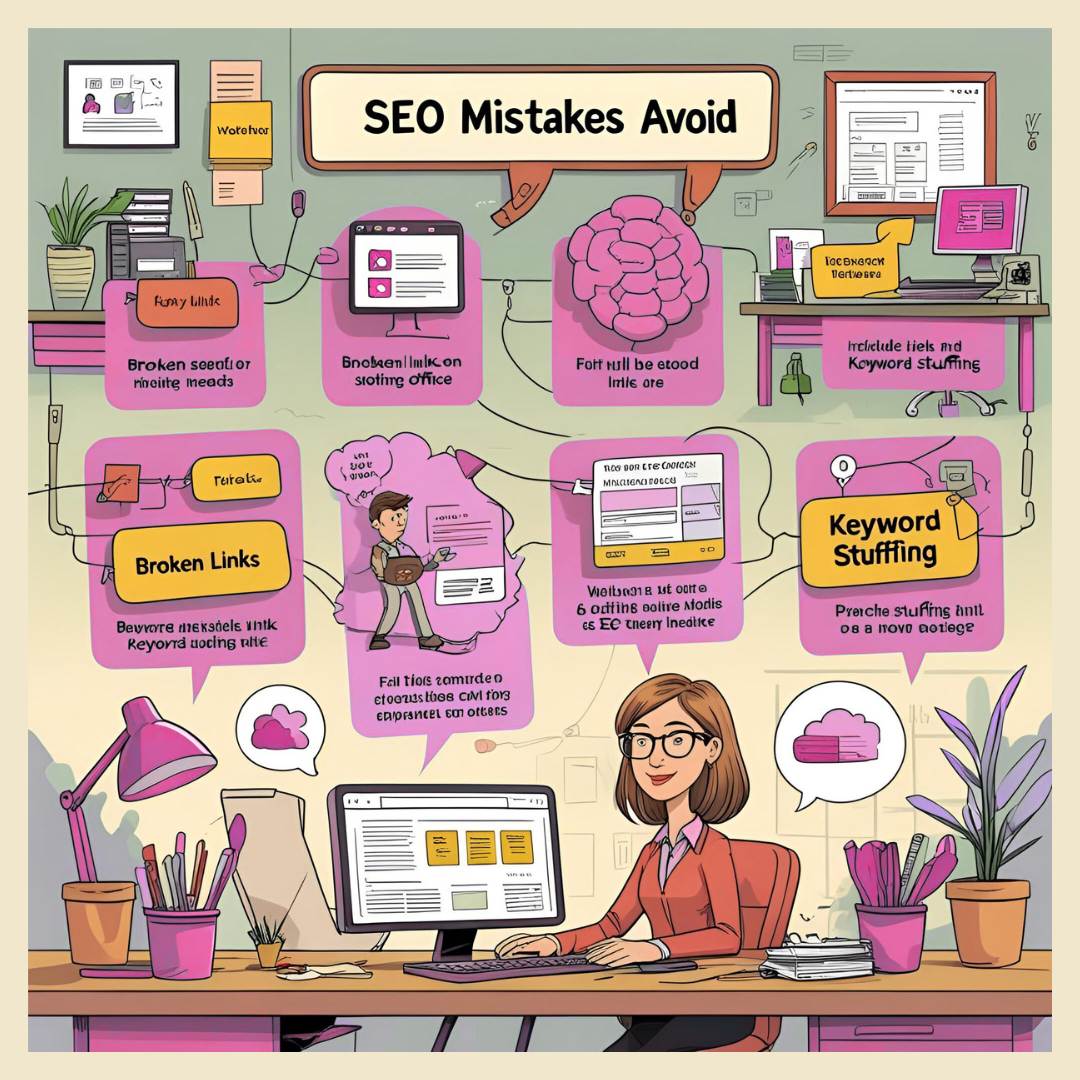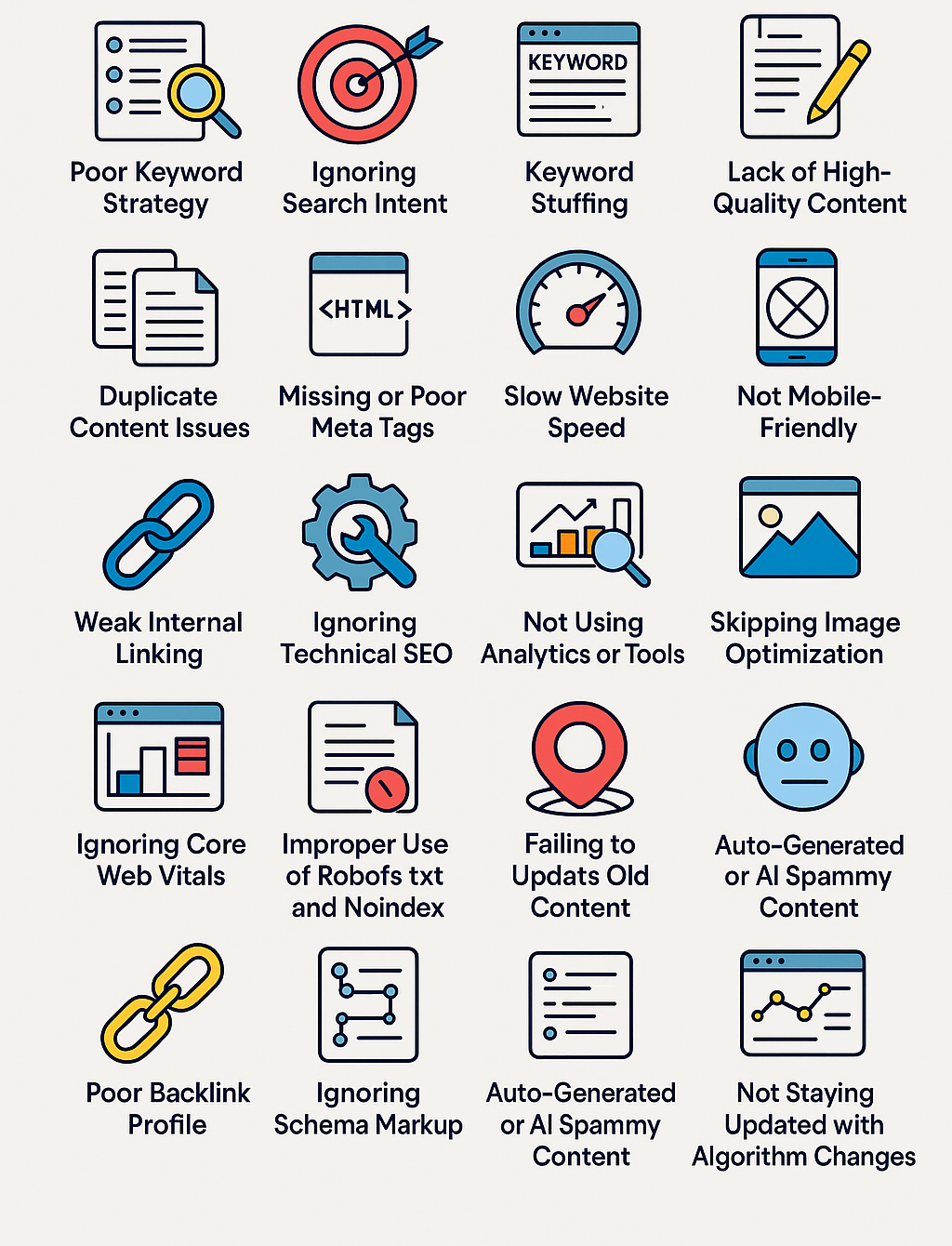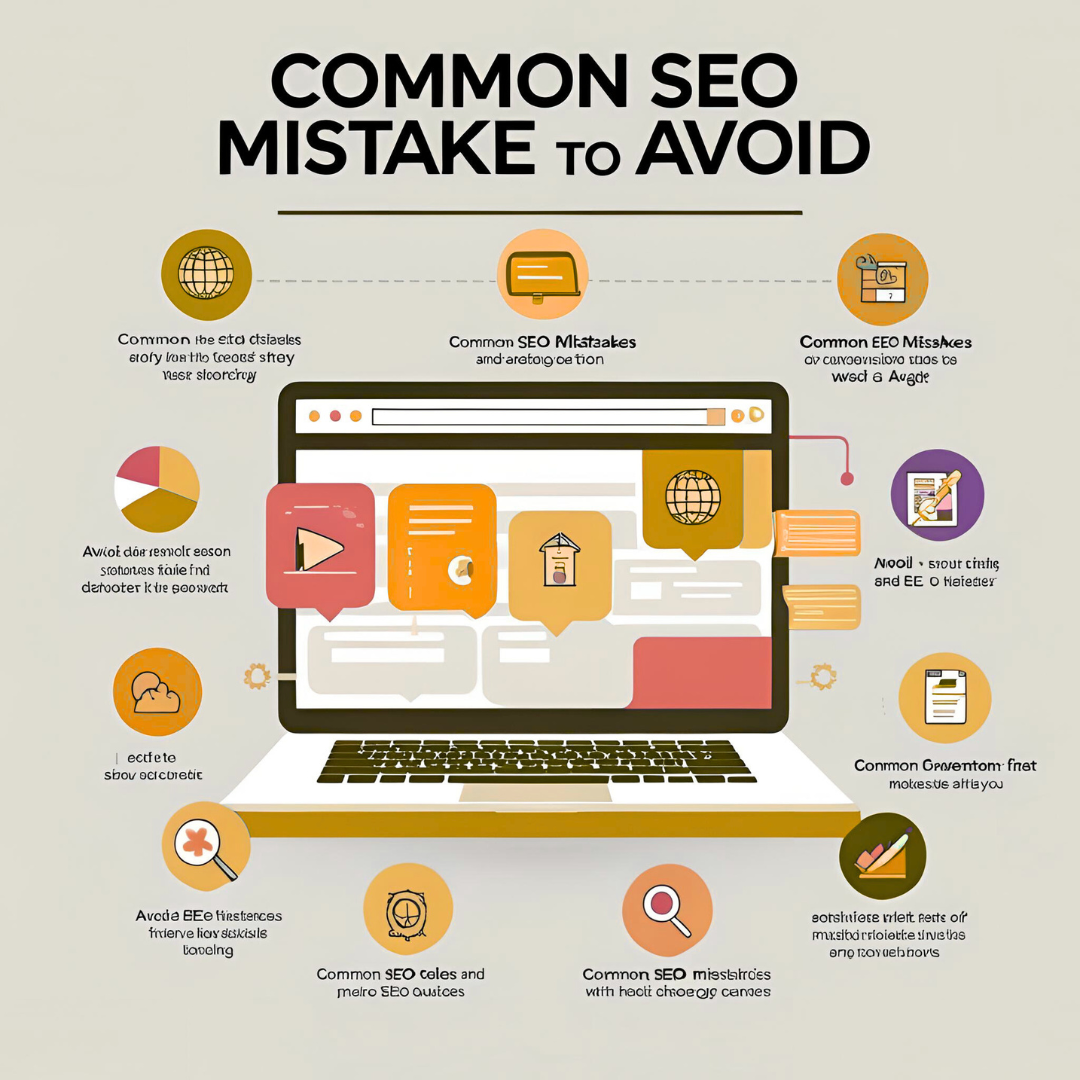Common SEO Mistakes to Avoid
Common SEO Mistakes to Avoid:
A Complete Guide to Search Engine Success
Introduction
Search Engine Optimization (SEO) is the backbone of any digital marketing strategy. It determines whether your content appears at the top of Google’s search results—or gets buried beneath your competitors. Yet despite the wealth of information available today, even experienced marketers frequently make Common SEO Mistakes to Avoid that can sabotage rankings, reduce traffic, and waste resources.
In an ever-evolving SEO landscape shaped by Google’s algorithm updates, AI-driven search experiences, and mobile-first indexing, avoiding mistakes is just as important as implementing best practices.
In this in-depth guide, we’ll explore the most common SEO mistakes to avoide that businesses and marketers make—and more importantly, how to fix them. Whether you’re a beginner or a seasoned expert, this article will help you identify and avoid the pitfalls that hold your site back from its true potential.

Table of Contents (Common SEO Mistakes to Avoid)
- Poor Keyword Strategy
- Ignoring Search Intent
- Keyword Stuffing
- Lack of High-Quality Content
- Duplicate Content Issues
- Missing or Poor Meta Tags
- Slow Website Speed
- Not Mobile-Friendly
- Weak Internal Linking
- Ignoring Technical SEO
- Not Using Analytics or Tools
- Skipping Image Optimization
- Ignoring Core Web Vitals
- Improper Use of Robots.txt and Noindex
- Forgetting Local SEO
- Failing to Update Old Content
- Poor Backlink Profile
- Ignoring Schema Markup
- Auto-Generated or AI Spammy Content
- Not Staying Updated with Google Algorithm Changes
1. Poor Keyword Strategy
Many websites either:
- Target generic or overly competitive keywords
- Ignore long-tail or local keywords
- Use keywords irrelevant to user intent
Solution:
- Use tools like Ahrefs, SEMrush, and Google Keyword Planner
- Focus on user intent, not just volume
- Mix short-tail, long-tail, and question-based queries
2. Ignoring Search Intent
Google now emphasizes intent-based results—not just keyword matches.
Example:
Searching “best DSLR camera” shows reviews, not product pages.
Solution:
Match your content format with the type of search:
- Informational = Blogs, guides
- Navigational = Brand pages
- Transactional = Product or service pages

3. Keyword Stuffing
Stuffing keywords unnaturally makes content hard to read and penalizes rankings.
Solution:
- Use keywords naturally and sparingly
- Include LSI (Latent Semantic Indexing) and related terms
- Prioritize readability and flow
4. Lack of High-Quality Content
Thin or low-value content doesn’t rank or engage users.
Solution:
- Write in-depth, original, helpful content
- Aim for E-E-A-T: Experience, Expertise, Authoritativeness, Trustworthiness
- Use data, case studies, images, and expert quotes
5. Duplicate Content Issues
Duplicate pages confuse search engines and dilute rankings.
Common Causes:
- Multiple product pages with slight variations
- Copied blog content
- Pagination issues
Solution:
- Use canonical tags
- Consolidate similar content
- Regularly audit with Siteliner or Screaming Frog

6. Missing or Poor Meta Tags
Meta titles and descriptions influence click-through rates (CTR) and rankings.
Solution:
- Craft unique, compelling meta titles and descriptions for each page
- Include primary keywords
- Stay within optimal lengths:
- Title: ~60 characters
- Description: ~160 characters
7. Slow Website Speed
Google uses page speed as a ranking factor. A slow site results in:
- Higher bounce rates
- Lower conversions
- Poor rankings
Solution:
- Compress images (use WebP)
- Minify CSS, JS, and HTML
- Enable caching
- Use CDNs and faster hosting
- Test using Google PageSpeed Insights or GTmetrix

8. Not Mobile-Friendly
Over 60% of searches come from mobile devices. Google uses mobile-first indexing.
Solution:
- Use a responsive design
- Avoid Flash or large popups
- Test with Google’s Mobile-Friendly Test
9. Weak Internal Linking
Poor or random internal linking:
- Confuses search engines
- Fails to distribute link equity
- Misses opportunities for deeper engagement
Solution:
- Link to relevant internal pages with anchor text
- Use a clear site architecture
- Avoid orphaned pages
10. Ignoring Technical SEO
Without a solid foundation, content won’t perform—even if it’s excellent.
Solution:
- Submit a sitemap to Google Search Console
- Use proper header tags (H1, H2, H3…)
- Fix crawl errors, broken links, and redirect chains
- Ensure SSL (HTTPS) is active
- Maintain clean URL structures

11. Not Using Analytics or Tools
Without data, you’re flying blind.
Solution:
- Set up Google Analytics and Google Search Console
- Use heatmaps (e.g., Hotjar) to track behavior
- Monitor bounce rate, time on page, traffic sources, and conversions
12. Skipping Image Optimization
Unoptimized images:
- Slow your site down
- Don’t appear in image search
- Miss out on extra SEO value
Solution:
- Add descriptive alt text
- Compress images
- Rename image files with relevant keywords (e.g.,
seo-tools-2025.jpg)
13. Ignoring Core Web Vitals
Google’s Core Web Vitals focus on:
- LCP (Loading)
- INP (Interactivity)
- CLS (Visual stability)
Solution:
- Use PageSpeed Insights to measure and fix issues
- Preload critical assets
- Improve server response time
- Avoid layout shifts
14. Improper Use of Robots.txt and Noindex Tags
Accidentally blocking pages can remove them from search results.
Solution:
- Audit your robots.txt file regularly
- Use noindex tags carefully (e.g., for thank-you pages)
- Don’t block important resources (like CSS/JS)
15. Forgetting Local SEO
Businesses serving local areas often fail to optimize for geo-targeted searches.
Solution:
- Create and optimize a Google Business Profile
- Use local keywords (e.g., “SEO agency in Dubai”)
- Get listed in local directories
- Encourage customer reviews
16. Failing to Update Old Content
Stale content leads to poor user experience and declining rankings.
Solution:
- Update stats, facts, and outdated references
- Add internal links to newer content
- Refresh meta descriptions
- Re-promote through social and email
17. Poor Backlink Profile
Backlinks are vital, but bad ones can do more harm than good.
Solution:
- Focus on quality over quantity
- Use Ahrefs or SEMrush to audit backlink profiles
- Disavow toxic links
- Build authority via guest posts, PR, HARO, and digital assets
18. Ignoring Schema Markup
Schema helps search engines understand your content better—and enables rich results.
Solution:
- Use JSON-LD schema for:
- Articles
- Reviews
- Products
- Events
- Test using Google’s Rich Results Tool
19. Auto-Generated or AI Spammy Content
AI content without oversight can lead to:
- Poor grammar
- Duplicate phrasing
- Misinformation
Solution:
- Use AI as a starting point, not a final product
- Always review, edit, and fact-check
- Incorporate real data and human insights
20. Not Staying Updated with Algorithm Changes
Google updates its algorithm thousands of times per year. Failing to adapt can sink your rankings.
Solution:
- Follow trusted SEO news sources like:
- Moz
- Search Engine Journal
- Google Search Central
- Audit your site regularly
- Join SEO communities or forums
Bonus Tips for SEO Success
- Use canonical tags to avoid duplicate content issues.
- Set up 404 pages that guide users back to useful content.
- Avoid JavaScript-heavy designs that hinder indexing.
- Don’t ignore international and multilingual SEO if you serve global users.
- Implement content silos to improve topical authority.
Conclusion
Avoiding common SEO mistakes to avoid is often the first step toward unlocking massive organic growth. From technical setup to content creation and user experience, every part of your website plays a role in how well it ranks.
SEO isn’t just about tricks—it’s about providing value, structuring information clearly, and helping both users and search engines find what they need.
By identifying and correcting these 20 common SEO errors, you’ll:
- Improve your site’s visibility
- Enhance the user experience
- Drive qualified, long-lasting traffic
Remember, SEO is a long game—but fixing these mistakes today sets you up for success tomorrow. Must read complete article “Common SEO Mistakes to Avoid” for get well in the future while making a website fully optimized with google.

